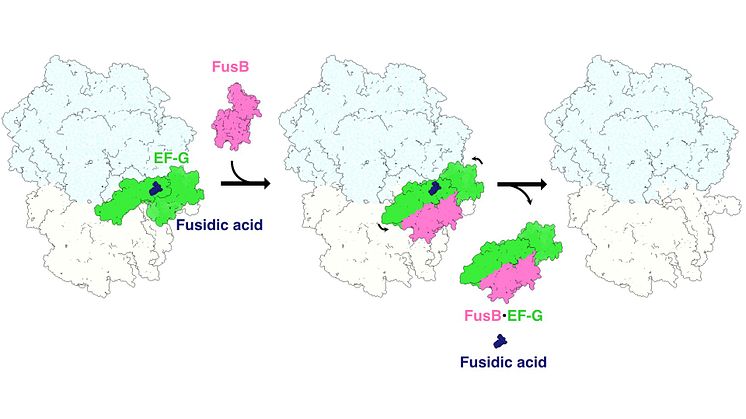Press release -
Antibiotics hindered treatment of urinary tract bacteria during the pandemic
The use of broad-spectrum antibiotics increased drastically in intensive care at the beginning of the Covid-19 pandemic. At first, this helped patients avoid urinary tract infections and seemed to prevent the growth of most bacteria. However, it also contributed to a sharp growth in enterococci, an antibiotic-tolerant group of bacteria, which rendered the treatment of urinary tract infections more difficult.
Peer-review/Observational study/People
These findings were produced by a new study at Uppsala University published in Frontiers in Medicine.
“In urinary tract infections without antibiotic resistance, the most common bacterial group is E. coli, which is relatively easy to treat with antibiotics. However, among the intensive care patients in our study, enterococci were by far the largest group of bacteria, accounting for 42 percent of all bacteria. Since they are antibiotic-tolerant, they can be difficult to get rid of,” explains Philip Karlsson, first author of the study.
It is inevitable that intensive care patients will be given urinary catheters, but bacterial growth on the catheters can cause complicated urinary tract infections. Urinary tract infections in patients with catheters are the most common care-related infection in Sweden, and they prolong the entire course of care. In severe cases, aggressive urinary tract bacteria can cause damage to the bladder and kidneys or spread to the blood.
Early in the Covid-19 pandemic, it was difficult to distinguish between symptoms caused by Covid-19 and symptoms caused by bacteria. When treating intensive care patients, there is also no time to wait for test results to find the right treatment. To counteract sepsis, antibiotics that work broadly against many different bacteria are used. But not all antibiotics work against all bacteria, and this is not merely down to resistance. Antibiotic resistance is when a bacterium has developed a way to destroy an antibiotic. Antibiotic tolerance can be explained by how the bacterium naturally functions and is structured.
In a new study, researchers examined urine samples from 101 patients in intensive care with a Covid-19 infection at Uppsala University Hospital. The samples were taken directly from the patient's catheter and then examined in the laboratory to see how bacterial growth was affected by the antibiotic treatment.
The study shows that the antibiotic-tolerant enterococci accounted for 42 percent of the bacterial count, which is unusually high. Common urinary tract bacteria are much more fast-growing but also easier to treat. What the researchers discovered was that the enterococci provided protection for the other bacteria. This meant that the more easily treatable bacteria were not reached by the antibiotic treatment as long as the enterococci remained.
“The more common bacteria started to appear once the enterococci had established themselves. And this was taking place even during ongoing antibiotic treatment. In other words, otherwise easily treated bacteria – which are not resistant – were able to remain in the patient without being affected by the antibiotic treatment if the enterococci were there at the same time,” continues Karlsson.
“We don’t yet know how the enterococci provide protection for the other bacteria. But we hope that our results could increase knowledge about the impact of antibiotics and the role of enterococci in the course of urinary tract infections, and in the long run improve procedures in order to avoid them occurring,” concludes Karlsson.
Karlsson PA, et al. (2023); Antibiotic use during coronavirus disease 2019 intensive care unit shape multidrug resistance bacteriuria: A Swedish longitudinal prospective study. Front. With. 10:1087446. doi: 10.3389/fmed.2023.1087446, www.frontiersin.org/articles/1...
For more information:
Philip Karlsson, doctoral student at the Department of Medical Biochemistry and Microbiology, Uppsala University, e-mail: philip.karlsson@imbim.uu.se. Note: currently living in Australia so the time difference may affect the response time.
The research received a donation from the Swedish Research Council, the Swedish Society for Medical Research, the Knut and Alice Wallenberg Foundation, SciLife Lab, the Swedish Kidney Foundation and the Swedish Heart Lung Foundation. The study was a collaboration between researchers, clinical microbiologists and doctors at Uppsala University and Uppsala University Hospital, with support from the Swedish strategic programme against antibiotic resistance (Strama) and the Swedish Intensive Care Registry (SIR).
Related links
Topics
Categories
Founded in 1477, Uppsala University is the oldest university in Sweden. With more than 50,000 students and 7,500 employees in Uppsala and Visby, we are a broad university with research in social sciences, humanities, technology, natural sciences, medicine and pharmacology. Our mission is to conduct education and research of the highest quality and relevance to society on a long-term basis. Uppsala University is regularly ranked among the world’s top universities. www.uu.se


